Not too big, not too small
- Barbara Seith

- Jul 14
- 3 min read
These medium-sized birds don't necessarily "belong" together scientifically, but I like to know relative size and this is helpful for me. A nice array of Mid-sized birds from the trip
Black-collared Barbet - Barbets have zygodactyl feet -- two toes face forward & two toes back. They are mainly fruit eaters and they frequent South African gardens.




Pied Barbet - This was a bird I saw last time but did not get a good photo. These photos are from the last full day -- whew -- got a few photos this time!
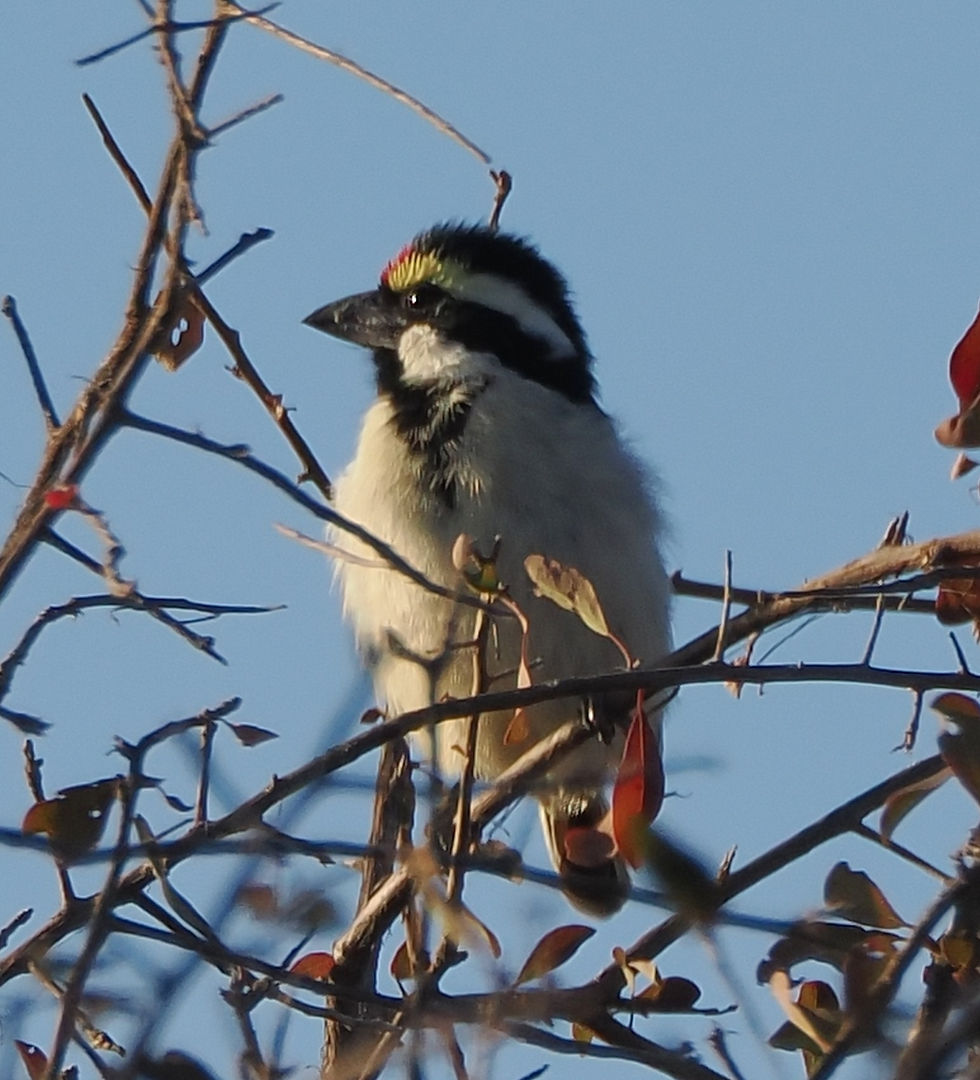
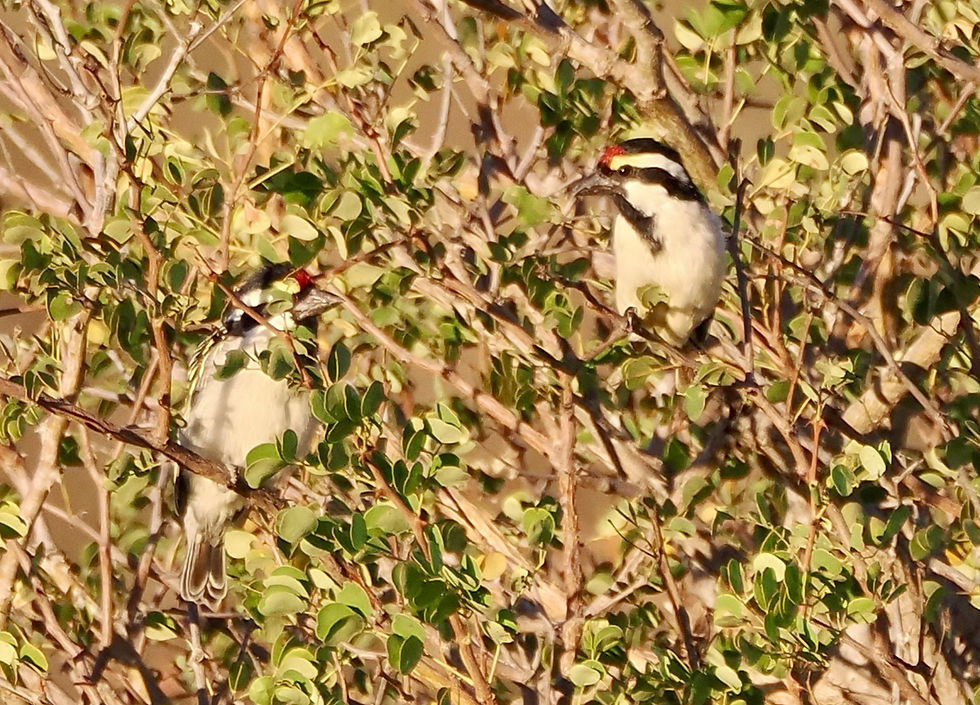

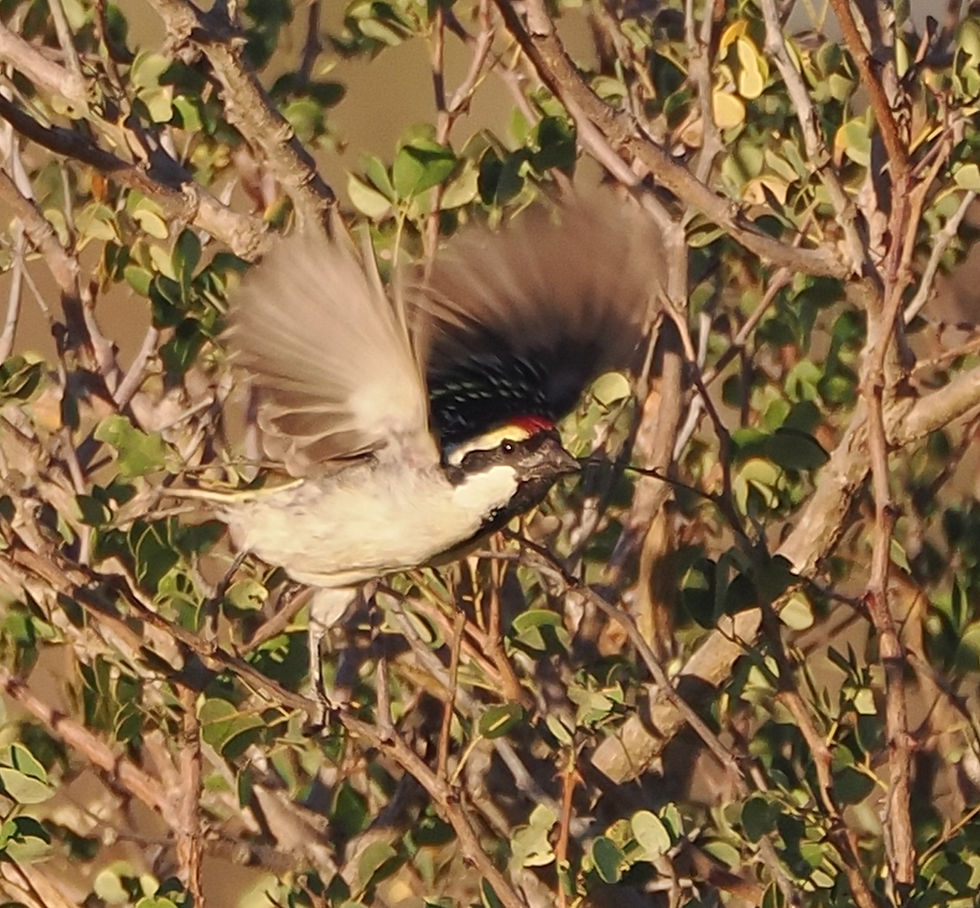
African Pipit - this is the most common Pipit in Africa. It is the only large pipit with pure white outer tail feathers. They like fields!

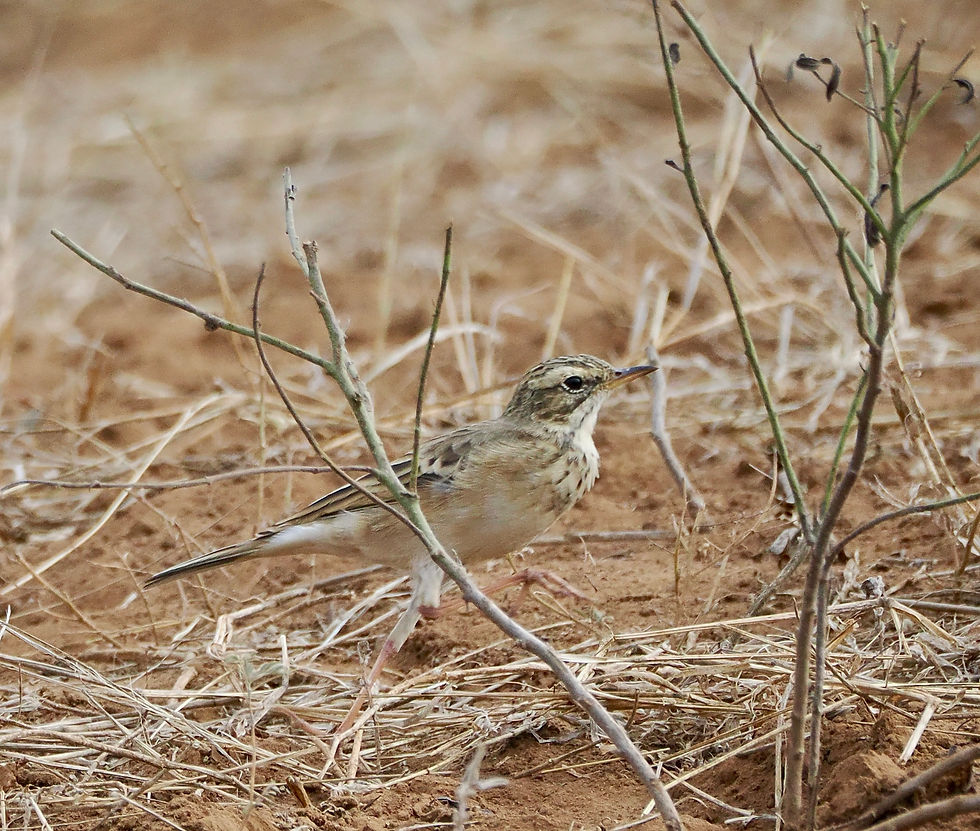
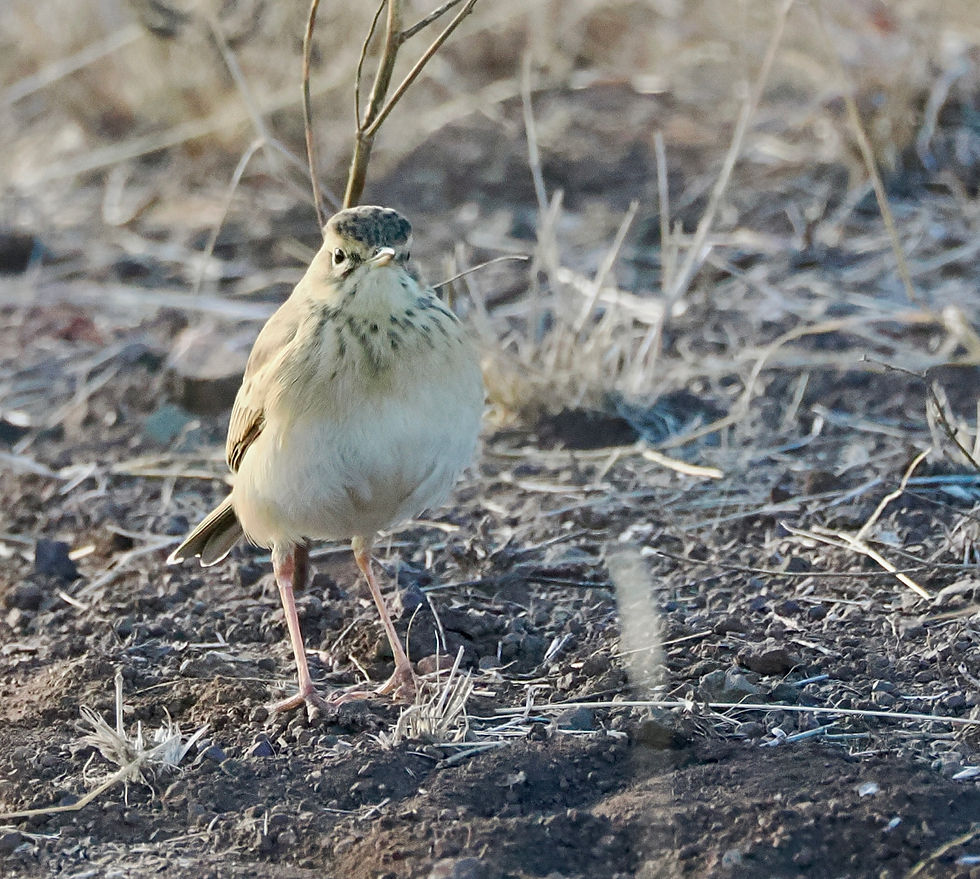
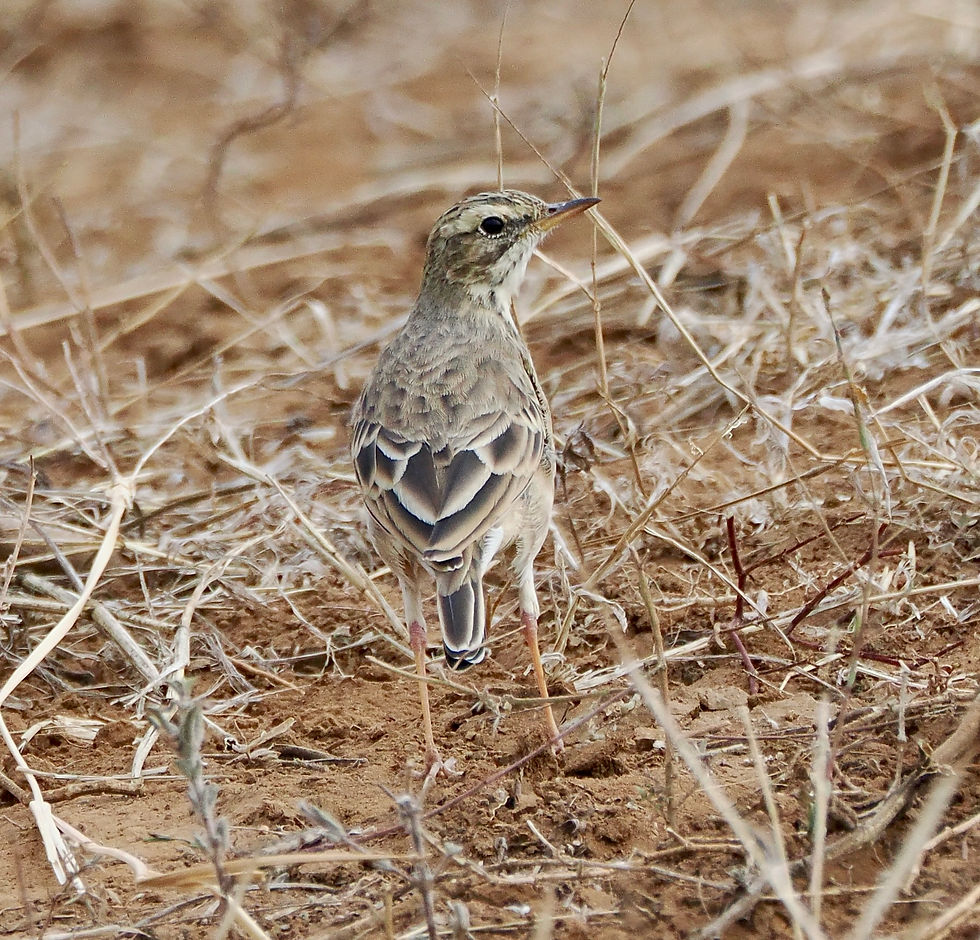

Cinnamon Breasted Bunting - This species isn't migratory, but just erratic. At times it is abundant locally, but then disappears for years. Lucky to get a photo this time.

Golden-breasted Bunting - This Bunting walks on open ground below trees in search seeds & insects much like our Painted Bunting.


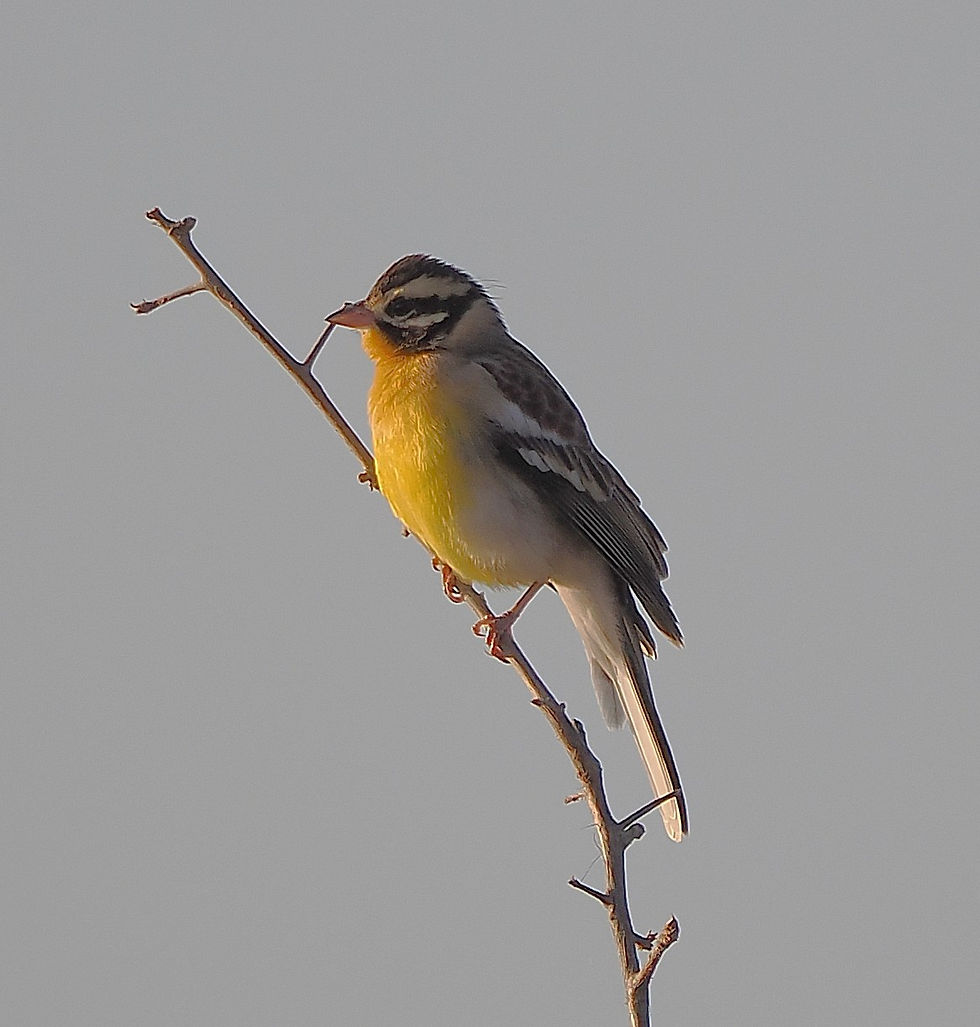

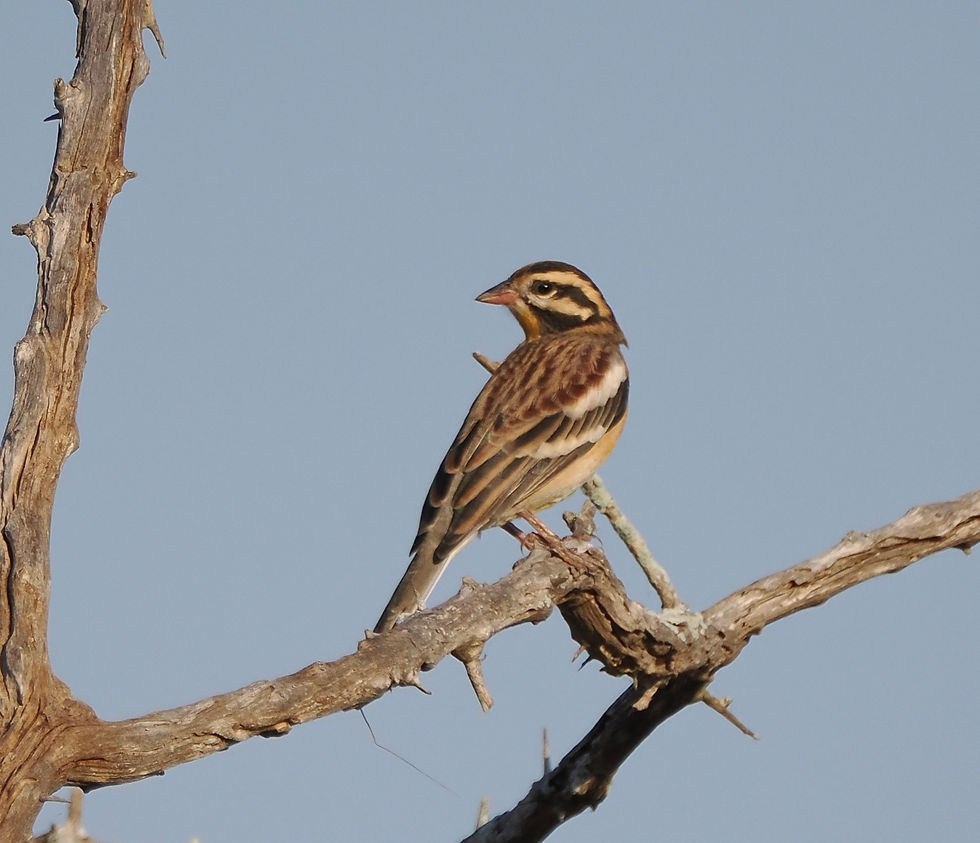
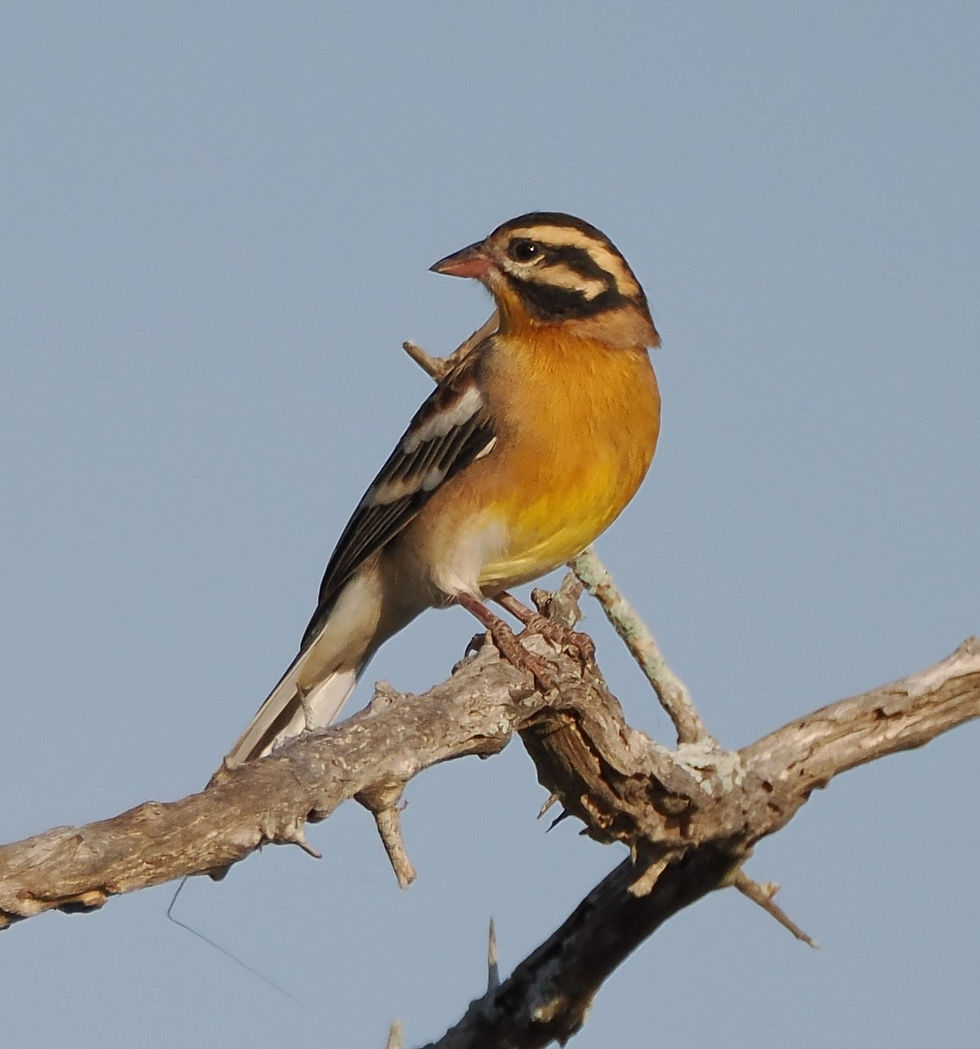

Yellow-billed Oxpecker - They love ticks, but also eat mucus and drink blood from wounds on the animals they parasitize. Yellow-billed is a bit of a misnomer - the have a yellow base of the bill with a red-tip.





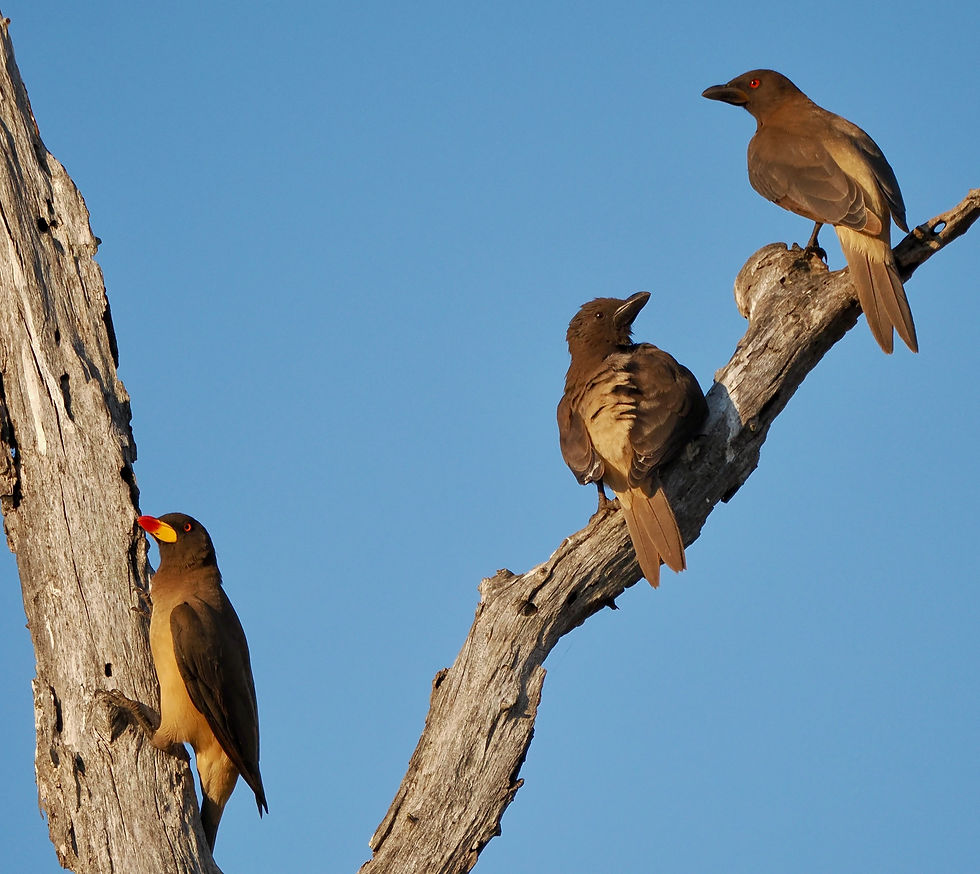
Red-billed Oxpecker - This species has a fully red-bill, a red eye and a yellow wattle surrounding the eye. They breed in tree-holes and line their nest with hair plucked from animals.

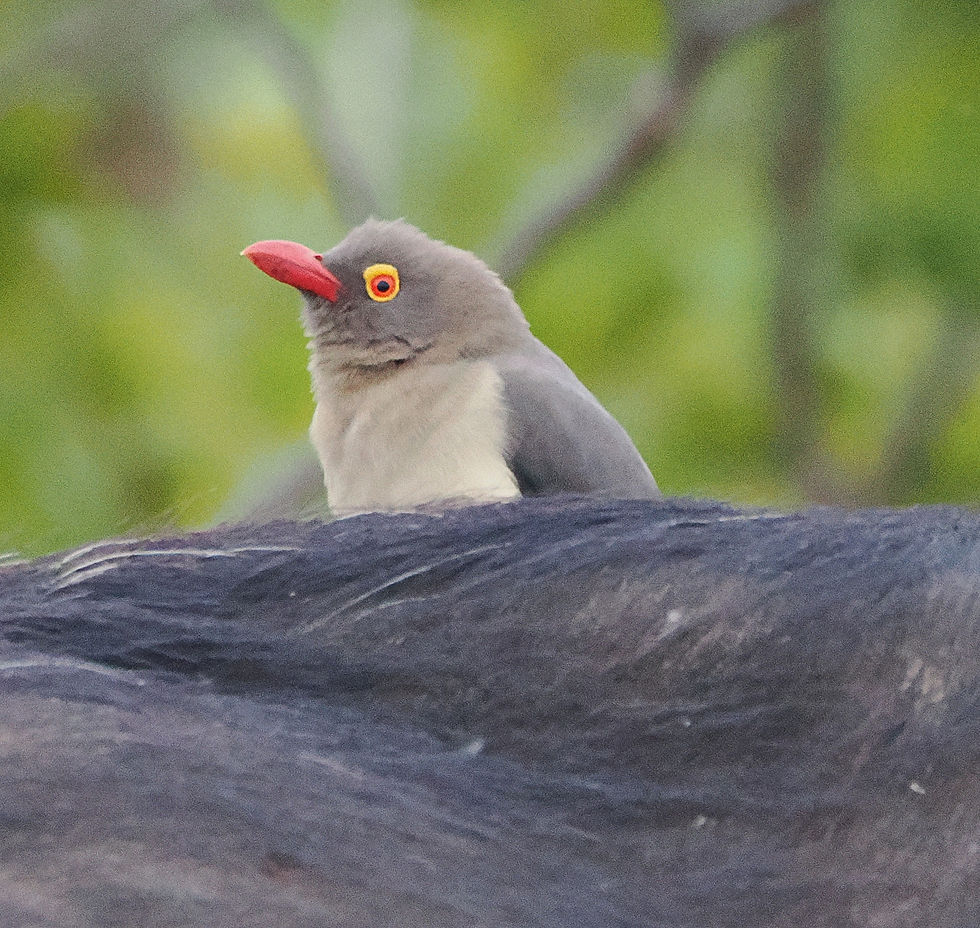
White-crested Helmetshrike - Like the name implies they have a white crest or more exactly a busy gray-white plumes around the head. Their most dramatic feature and a yellow wattle around the yellow eye.
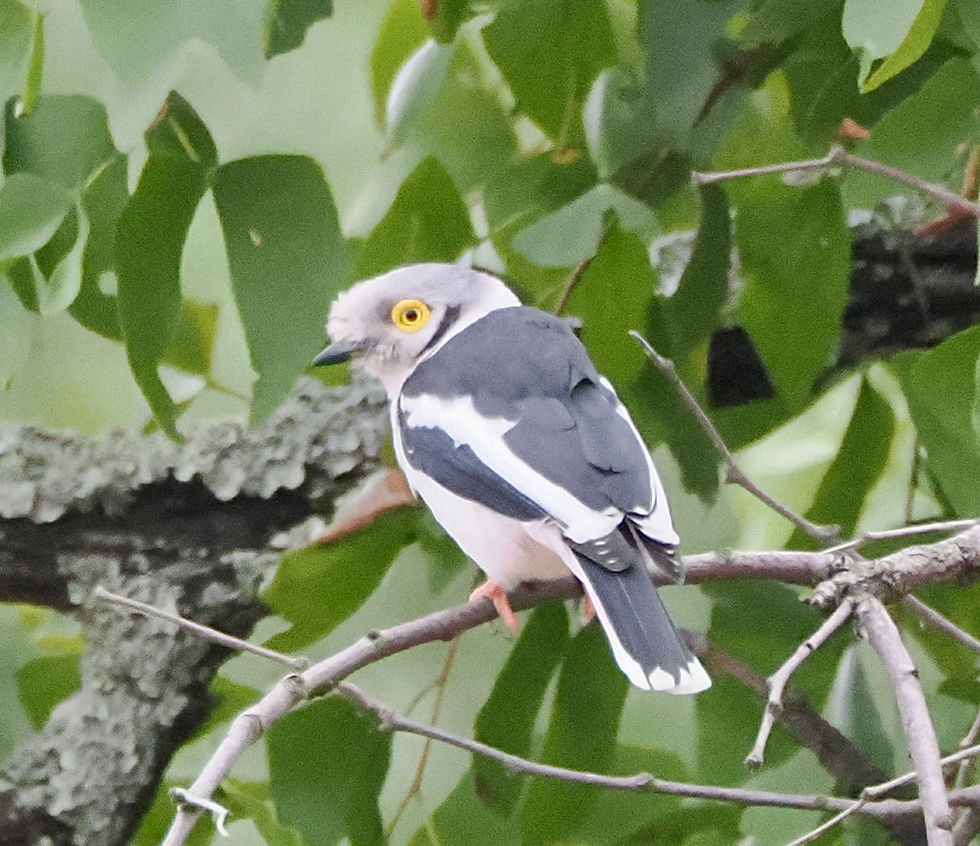

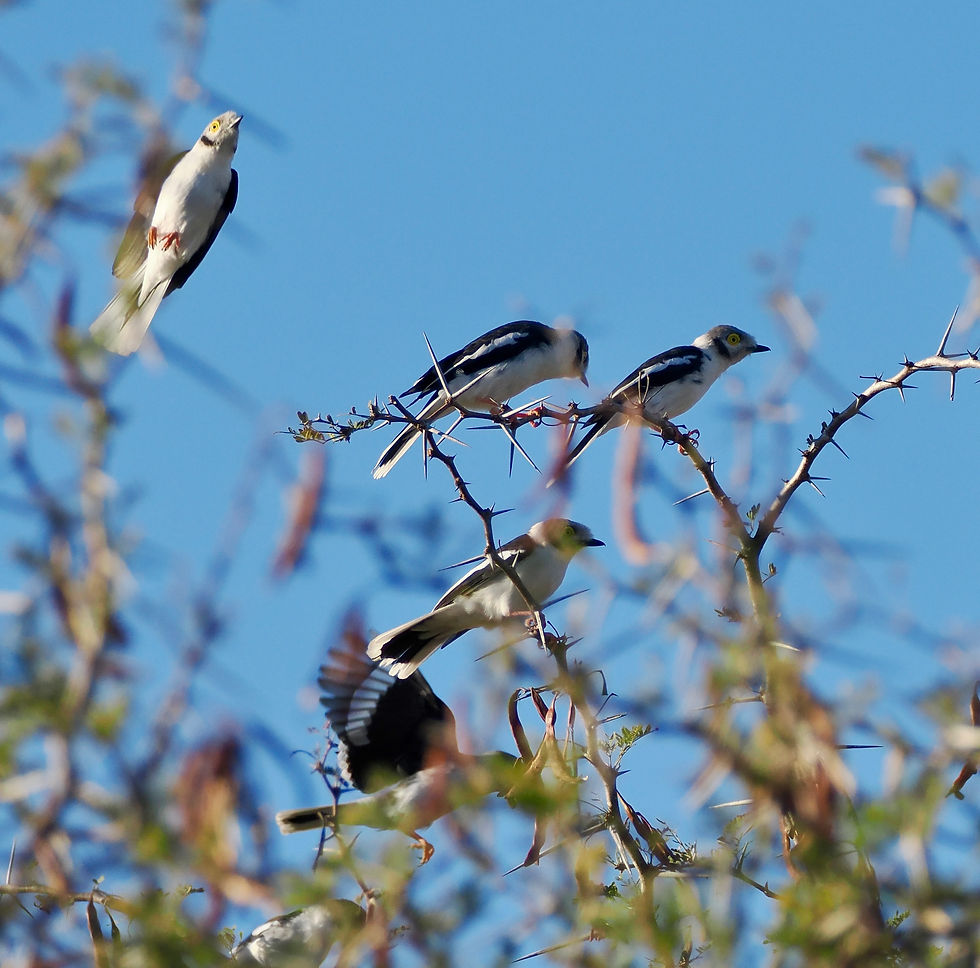
White-browed Scrub-robin - This stripey bird is often the first bird to sing at dawn and the last to call at dusk. Needless to say it is chatty, but interestingly NOT a Chat.


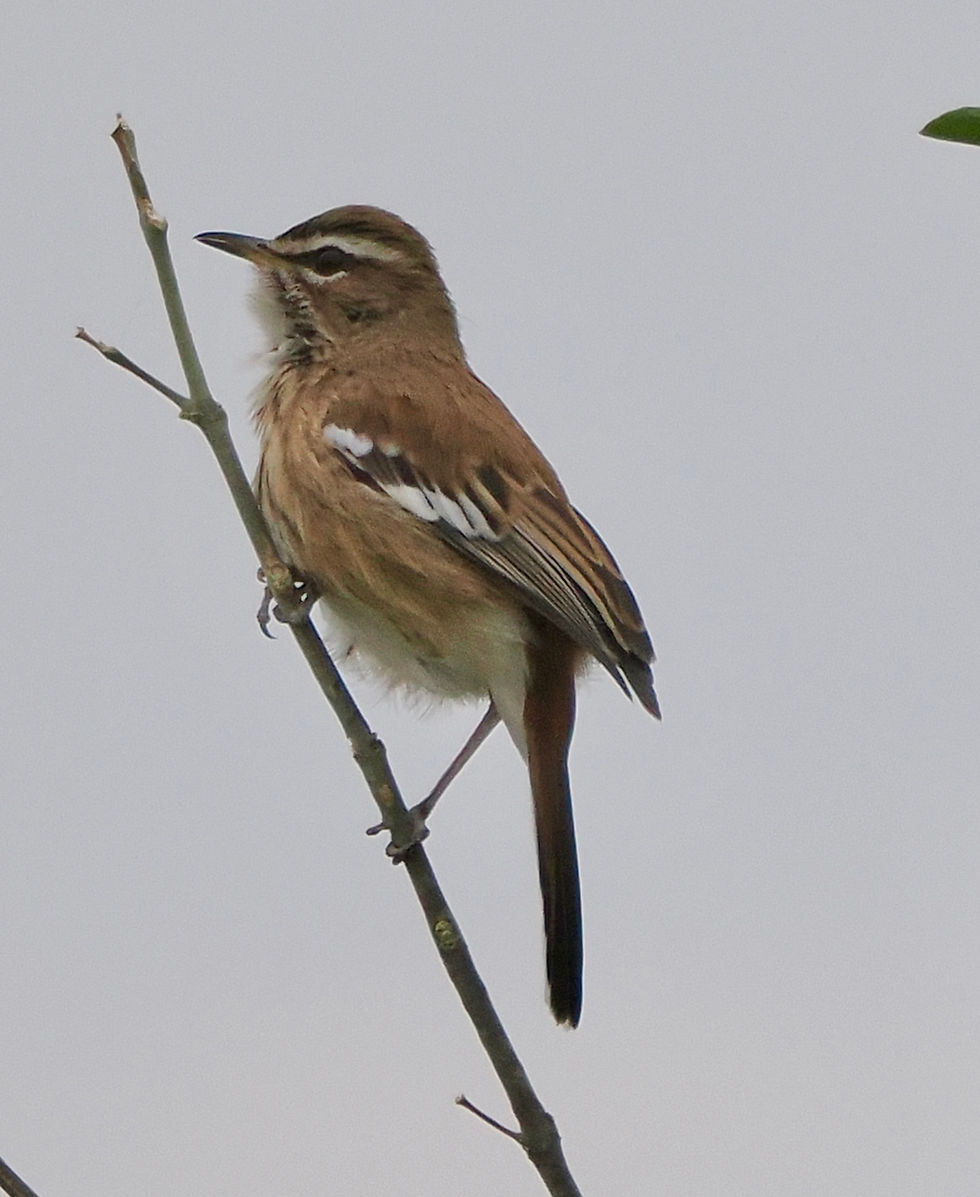
Southern Grey-headed Sparrow - a very long name for a very common sparrow. We logged 145 sightings, but it was probably more. I got tired of counting them.

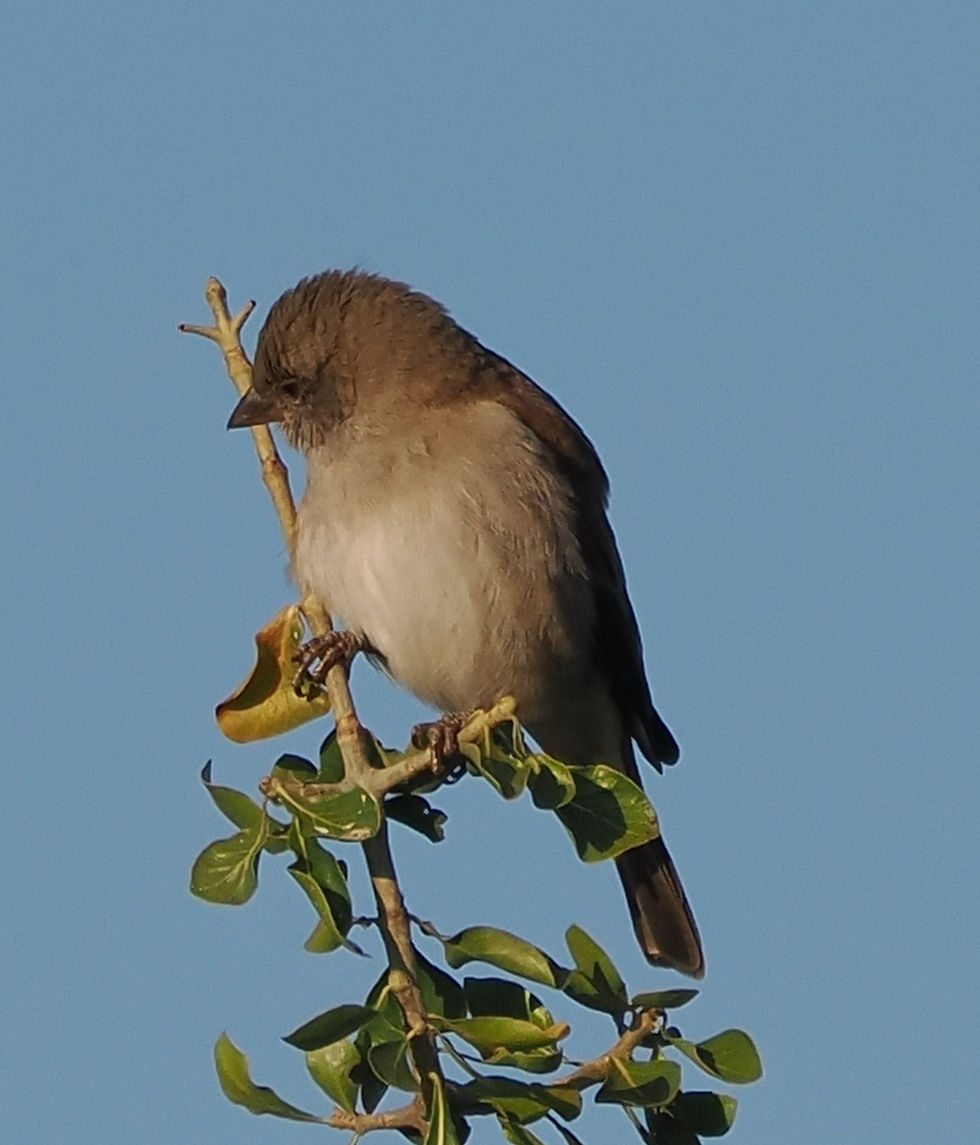

Fork-tailed Drongo - An intelligent, fearless predator that is very creative in obtaining food -- look for the forked tail and an angry red eye.


Sabota Lark - This species is fairly common - we saw 28 of them at different times. It has a fairly large bill for a lark (but not as large as a Large-billed Lark) and it imitates the calls of other bird.
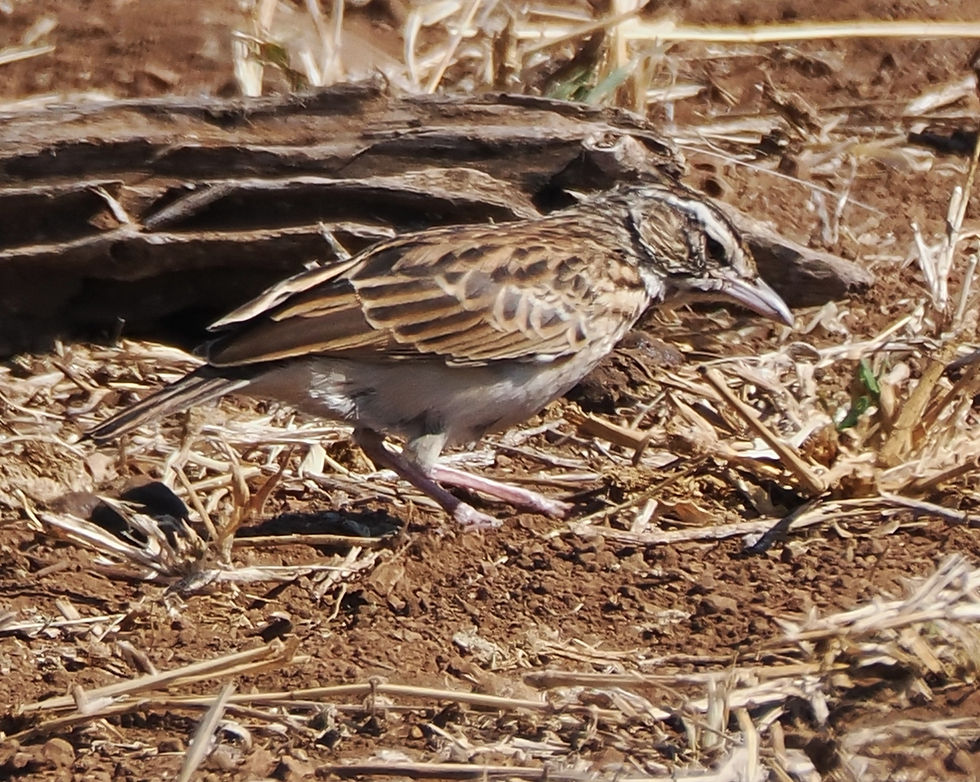

Chestnut-backed Sparrow-lark - Like burnt areas, which are readily available in Kruger. We saw lots of them near waterholes surrounded by dirt. They often hang out with game.
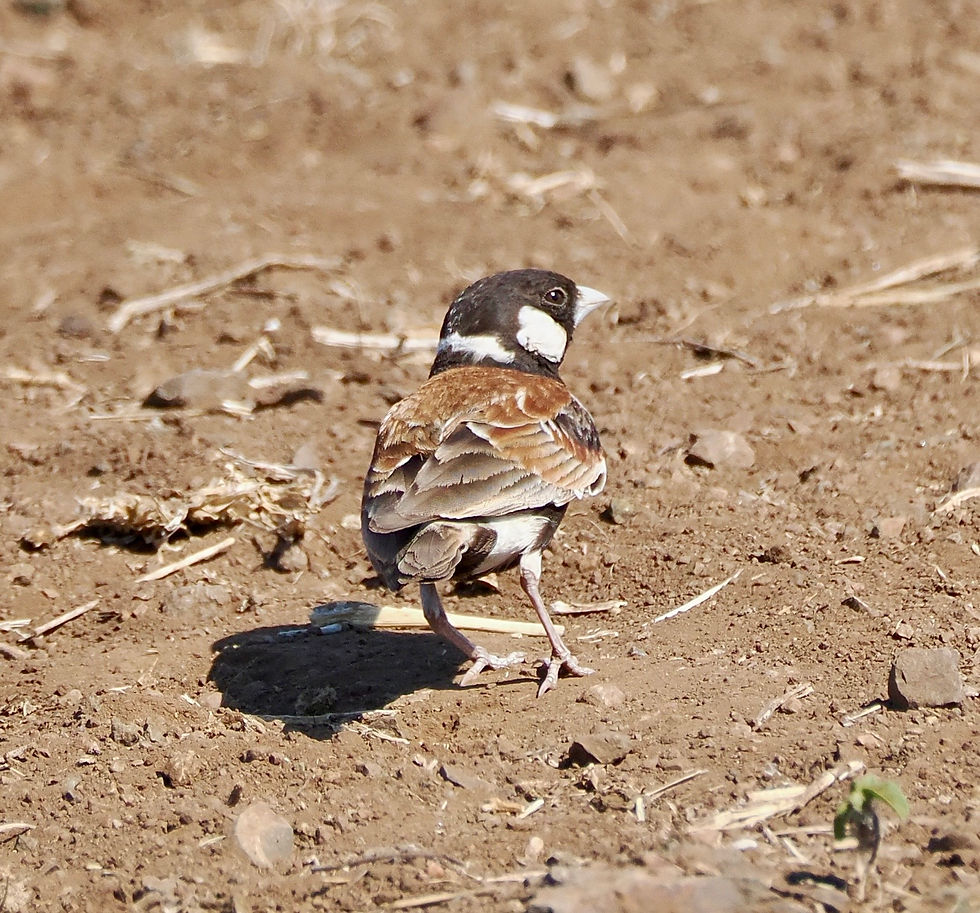
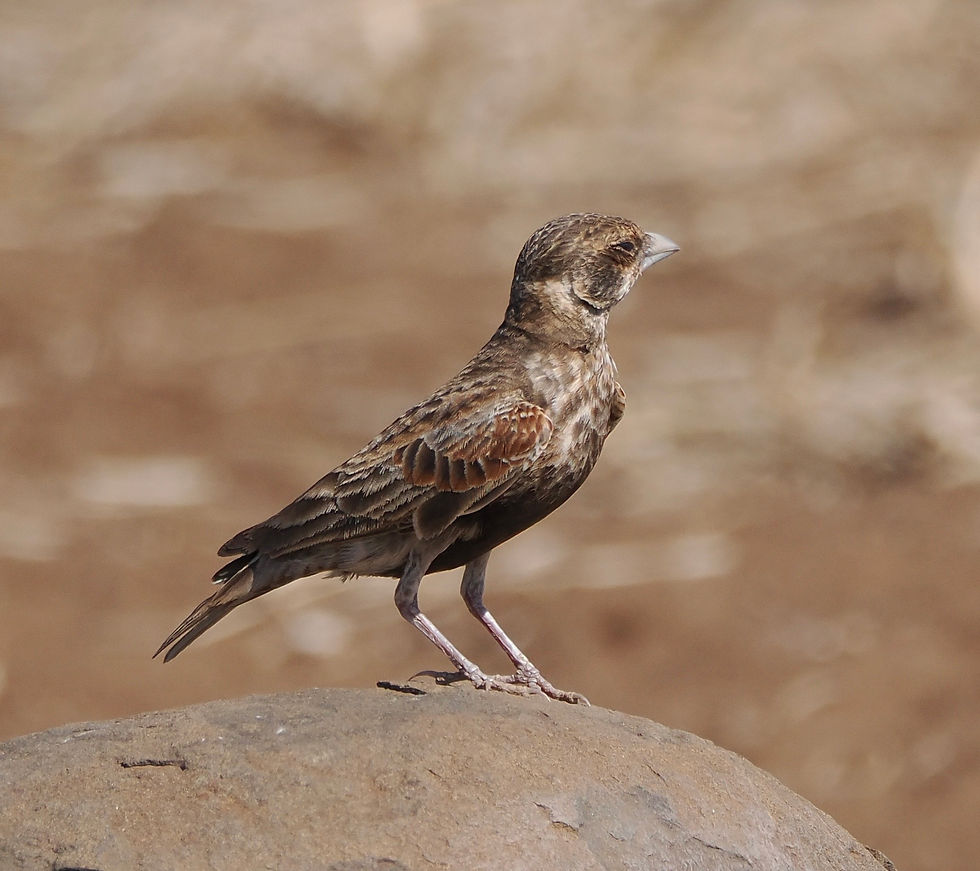
Pied Wagtail - All wagtails are characterized by a constantly bobbing tail. Striking in black & white plumage, its the most common Wagtail in Kruger.

Common Myna - Andrew does not like this bird (I understand -- in Florida they are usually seen in trash cans and behind fast food restaurants). He dislikes it so much he left if off his "official" Safaria bird list. Not sure when he had enough contact to hate them. I've been to Kruger twice only saw one the first time and two the second time. Not enough to inspire hatred (in my humble opinion), there much have been an incident I don't know about.



Common Bulbul - Sometimes known as a Dark-capped Bulbul, it is a very common garden bird. It started singing early but not as early as the Scrub-robin.
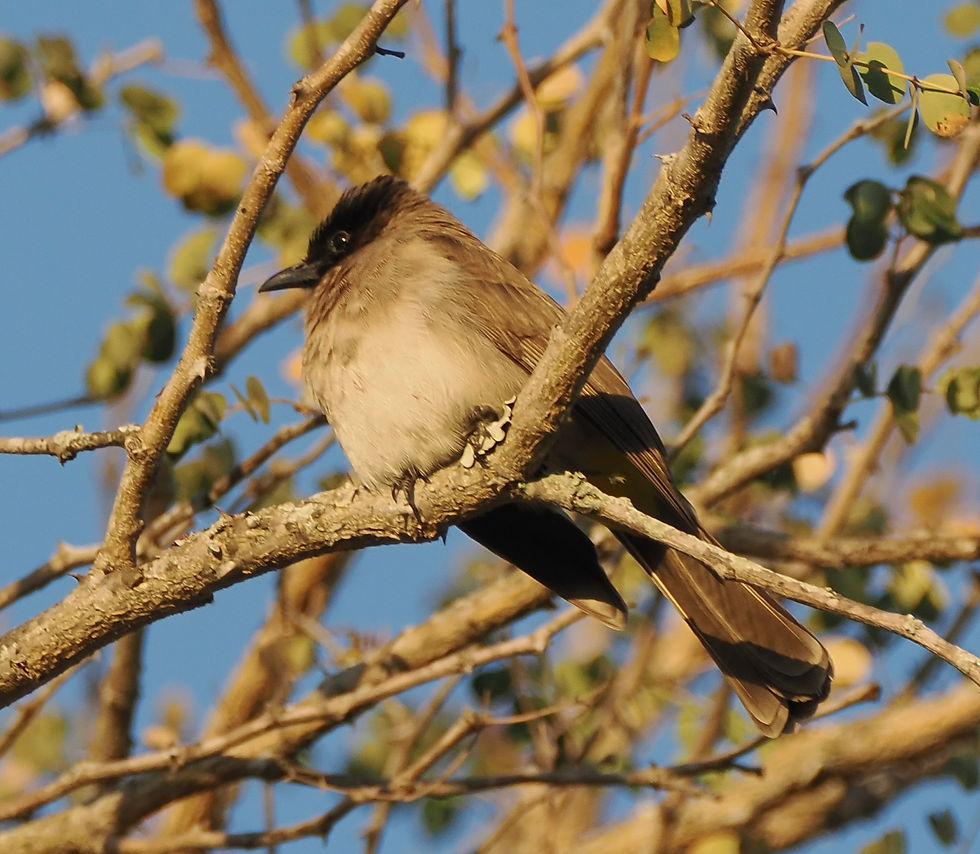
Southern Brubru - A small compact shrike -- look at that bill with the hook on the end -- it almost looks more like a Batis in build & plumage.
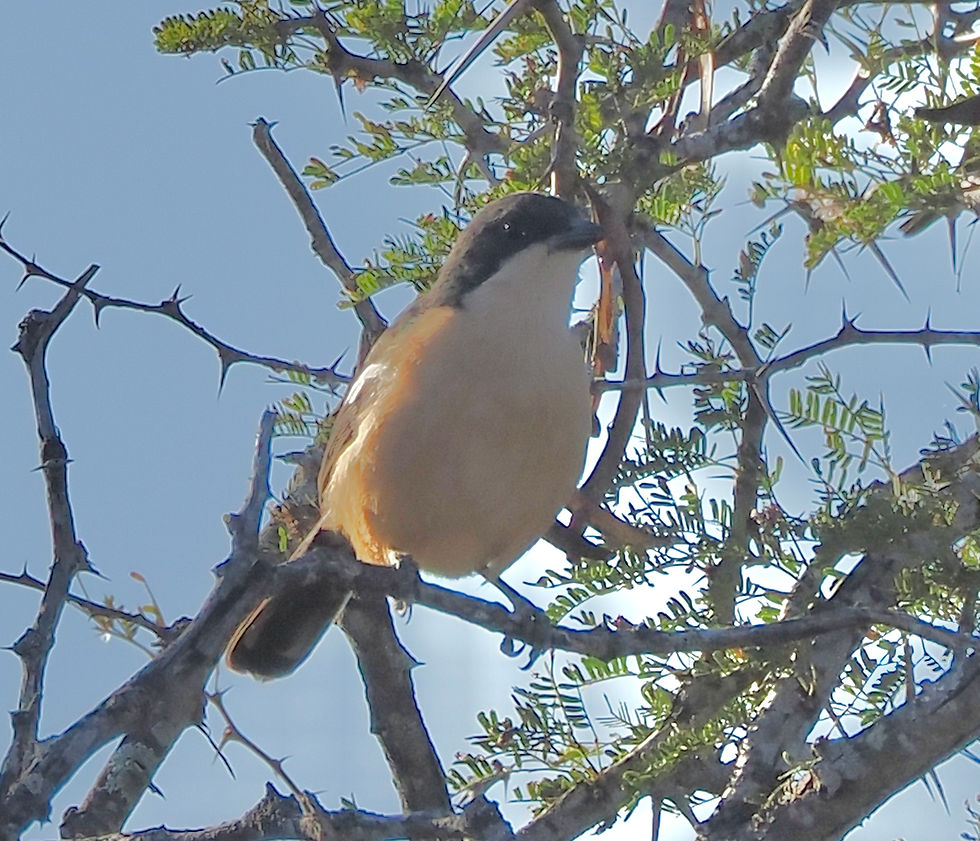

Capped Wheatear - This dramatically plumed bird breeds under-ground in Rodent tunnels and is an accomplished mimic.



Brown-crowned Tchagra - We struck out on its Black-Crowned cousin, but got good looks at this one. Tchagras spend most of their time on the ground or in low thickets - rarely far from cover.

African Stonechat - gets its name from its vocalization which sounds like two stones being knocked together - they are often perched up and easy to spot.


Arrow-marked Babbler - An intense looking bird with a very serious eye -- Yellow with a red ring and arrow shaped feathers on its check. Oh yeah, and it babbles -- rarely is it quiet or alone.





Comments